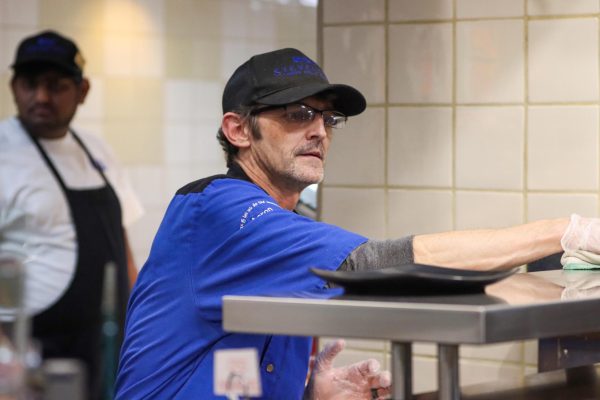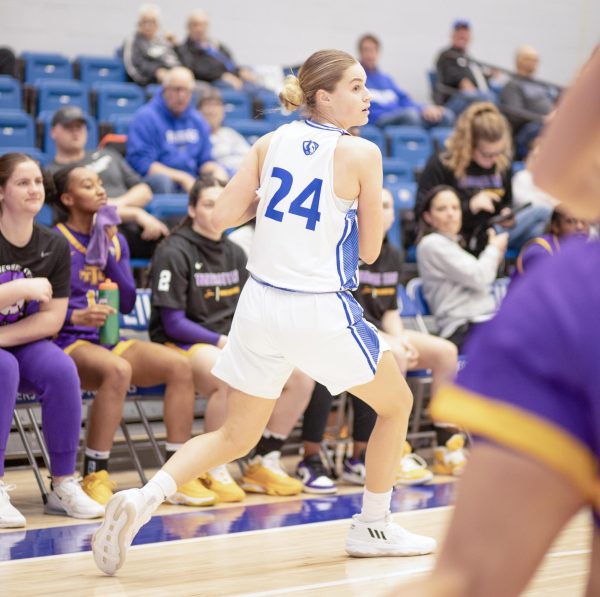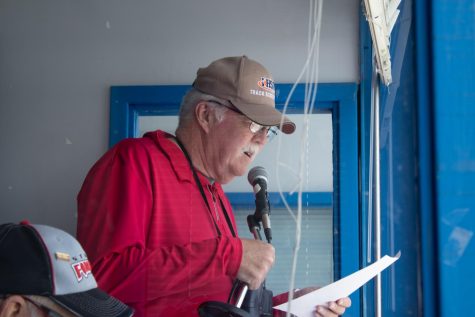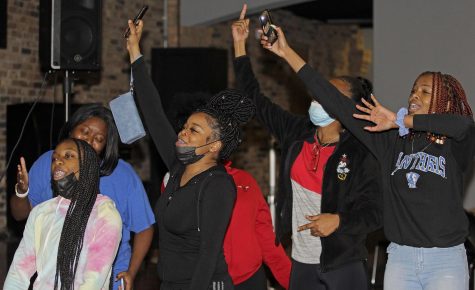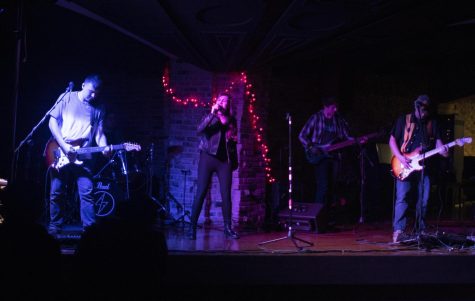Online retail attracts more college-aged shoppers
February 1, 2019
The Cross County mall appeared as if it had been shedding tears one Friday afternoon, as rain droplets trickled down from its exterior.
Every 15 minutes, the sliding doors drew open.
This 338,100 square-foot compound has been seemingly converted into what one might mistake for a fitness center.
Local residents, with their snowy hair atop their heads, can be seen strolling through the narrow, dimly lit corridors, nearly all of them empty handed.
The tiles on which they walk have been cluttered with scuffmarks, evidence of an entirely different era.
These scuff marks, however, are not the only fossils in this apparently empty structure.
At the site of a vacant space on the left side of the JC Penney entrance, where the DEB clothing retailer once resided, the lettering on the sign can still be made out.
On the opposite end of the building, a mural of a woman running into the mall, seen on the wall opposite of Scotty’s brew house, has begun to fade.
With a 25 percent drop in employment opportunities at department stores, according to Time Magazine, shopping malls have ebbed since 2002.
One culprit, of course, is online retail.
When companies like ToysRUS and RadioShack file for bankruptcy, junior sociology major Bradly Malloy senses an unwelcome feeling gnaw at him, knowing that each pair of Nike running shoes he purchases on Amazon may, in some form or fashion, drive retailers into oblivion.
“I do feel guilty because a lot of people are losing their jobs,” Malloy said. “These stores have been open for years.”
Had he bought his pair of black Nikes at a brick and mortar retailer, Malloy said, the price tag would have reached nearly $300, up from the $250 he spent for the shoes online.
Ten years ago, before Amazon took off, Malloy would depart on an excursion to the nearest Foot Locker, Famous Footwear or Nike store.
Shopping trips are anathema to him.
He grew disillusioned by the car rides, badgering employees and the futile searches down aisles one through 10.
Malloy has taken his money elsewhere, extolling Amazon for keeping prices in a range he can afford.
“I can get a jacket off Amazon for cheaper, and wait a couple days longer to get it, than pay an extra 30 bucks at the store to get right now,” Malloy said.
Not all student sentiments concerning retail are quite as critical.
For some, happiness is rooted in their recollections of riding in a stroller at their local shopping center.
Lunches at the food court and carnival music fill a special place in their childhoods, memories that they reflect fondly on when looking back.
Sophomore English major Maddie Evans reminisces about the twisted knots of dough she savored as a child at the Eastwood Mall in Bloomington, Illinois.
Sadness swept over her when the pretzel franchise she so often frequented closed up shop.
In March of 2017, one of her favorite department stores, Macy’s, formalized an exodus from her hometown mall.
As for freshman music major Andrew Hillyard, the thought of wooden horses bobbing up and down on the carousel at the Eastland Mall in Evansville, Indiana evokes memories of his childhood.
Those memories, though, do not provoke him to open up his wallet at a shopping center. His visits to the mall are, more than anything, relatively leisurely based.
“Just to go look,” Walker said.
“Not really to go buy anything, just to have something to do.”
Malloy readily punched in his payment information for Amazon Prime, a subscription that costs $59 a year for students.
The movies, music and free shipping, all features on Amazon Prime, make the investment every bit worthwhile for Malloy.
The cut-rate online retailers offset Malloy’s guilt. To get Malloy’s business back, brick and mortar retailers will need to consider their prices.
“Online has always done me right,” Malloy said.
Tom O’Connor can be reached at 581-2812 or [email protected].








































